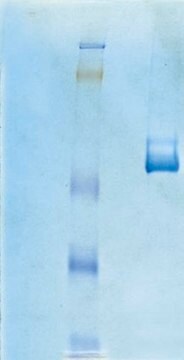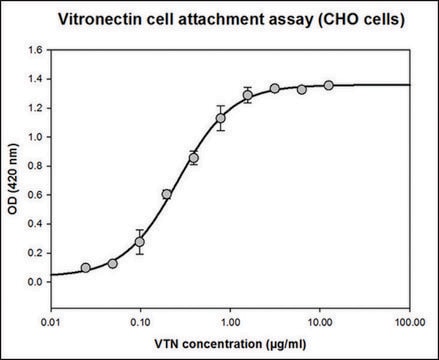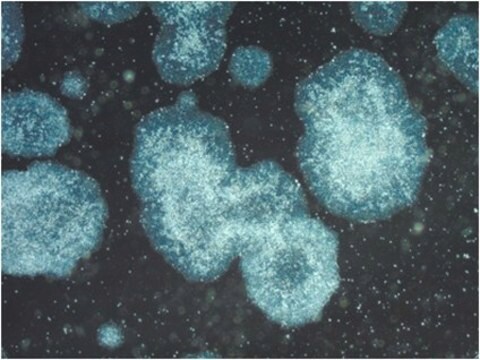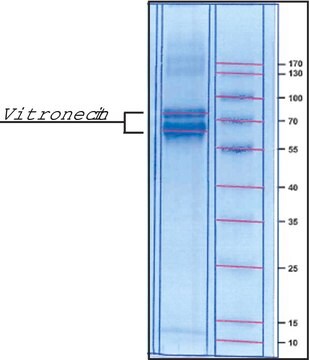5051
Human Vitronectin
from human plasma, liquid, 0.5 mg/mL, suitable for cell culture
Synonym(e):
Cell adhesion protein, ECM protein
About This Item
Empfohlene Produkte
Produktbezeichnung
Vitronectin, from human plasma, suitable for cell culture, solution
Biologische Quelle
human plasma
Qualitätsniveau
Sterilität
sterile-filtered
Assay
>95%
Form
solution
Mol-Gew.
75 kDa
Verpackung
pkg of 0.1 mg
Konzentration
0.5 mg/mL
Methode(n)
cell culture | mammalian: suitable
Löslichkeit
water: miscible
UniProt-Hinterlegungsnummer
Versandbedingung
dry ice
Lagertemp.
−20°C
Angaben zum Gen
human ... VTN(7448)
Allgemeine Beschreibung
Vitronectin′s primary use in cell culture is related to cell adhesion. It also binds to heparin and collagen.
Vitronectin is ideal for coating of surfaces. The optimal concentration for cell attachment and culture may differ for various cell types. Vitronectin has been used at a final coating concentration as low as 50 ng/cm2 on plasticware. It is provided in user-friendly packaging for use and storage. Vitronectin is sterile filtered and is supplied as a ready to use solution after thawing and concentration adjustment.
Biochem./physiol. Wirkung
Angaben zur Herstellung
Haftungsausschluss
Lagerklassenschlüssel
10 - Combustible liquids
Flammpunkt (°F)
Not applicable
Flammpunkt (°C)
Not applicable
Hier finden Sie alle aktuellen Versionen:
Analysenzertifikate (COA)
Die passende Version wird nicht angezeigt?
Wenn Sie eine bestimmte Version benötigen, können Sie anhand der Lot- oder Chargennummer nach einem spezifischen Zertifikat suchen.
Besitzen Sie dieses Produkt bereits?
In der Dokumentenbibliothek finden Sie die Dokumentation zu den Produkten, die Sie kürzlich erworben haben.
Kunden haben sich ebenfalls angesehen
Artikel
Extracellular matrix proteins such as laminin, collagen, and fibronectin can be used as cell attachment substrates in cell culture.
Unser Team von Wissenschaftlern verfügt über Erfahrung in allen Forschungsbereichen einschließlich Life Science, Materialwissenschaften, chemischer Synthese, Chromatographie, Analytik und vielen mehr..
Setzen Sie sich mit dem technischen Dienst in Verbindung.













